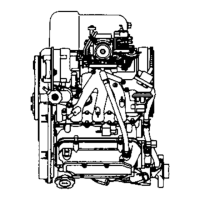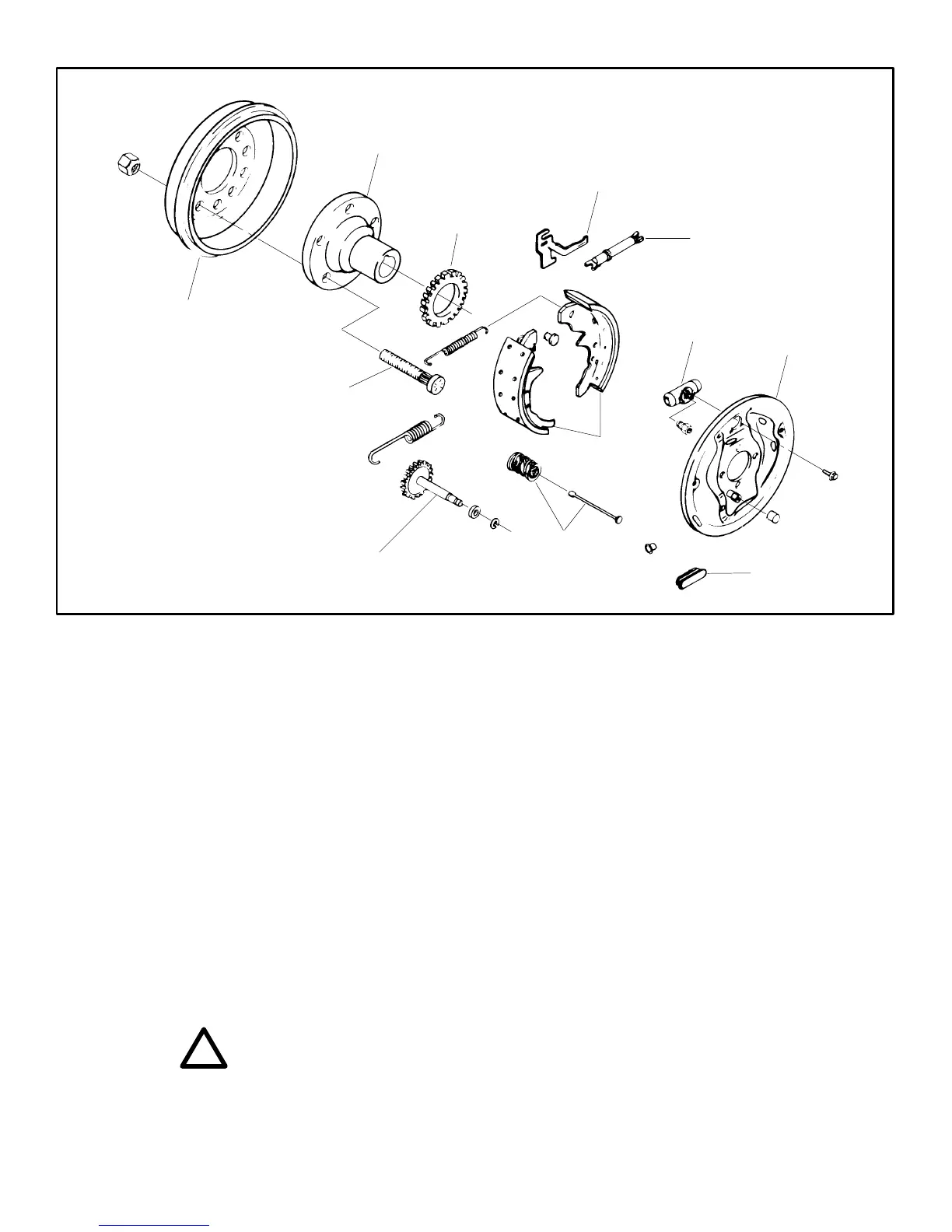170
Speedometer
Gear
Brake
Drum
Hub
Speedometer
Gear
Brake
Adjuster
Dust
Shield
Wheel
Cylinder
Adjustment
Hole Cover
Brake
Shoes
Wheel
Mounting
Screw
Shoe
Retainer
Brake
Lever
FIGURE 11
(Typical) Rear Brake Assembly
MASTER CYLINDER
Master cylinder failures may usually be recognized by
repeated loss of brake fluid or by brake pedal fading
gradually while brakes are applied. Check master cylin-
der and immediate area for signs of leaking fluid. If leak-
age is found on the end of cylinder where brake lines are
attached, check for loose or broken lines or loose brass
“U” fitting. Repair as necessary. If leak is found on oppo-
site end around the boot, it is necessary to replace or
repair the master cylinder. If pedal fades while brakes are
applied and there is no air in the lines or leakage at the
wheel cylinders, the master cylinder must be replaced or
rebuilt.
WARNING
!
• Pedal fading may be experienced with no loss of
fluid, due to defective internal parts in the mas-
ter cylinder.
To remove master cylinder, remove fitting screw holding
brass fitting to master cylinder. Note: Brake lines DO
NOT need to be removed from brass fitting. Remove two
cylinder mounting screws and remove cylinder by pulling
away from master cylinder push rod.
Replace cylinder in reverse manner. Fill cylinder with
fluid and bleed the brake system.
BRAKE PEDAL FREE TRAVEL
Free travel of the brake pedal can be checked by remov-
ing the master cylinder filler plug. Press the brake pedal
slowly by hand while watching the surface of the fluid for
bubbles or slight turbulence which indicates adequate
free travel.
No disturbance on the fluid surface indicates insufficient
free travel and the linkage between the pedal and master
cylinder must be adjusted.
Loosen the locknut between the pushrod and brake rod
and turn the pushrod into the brake rod to shorten the
length. See Figure 12, page 19. Check for disturbance
again and adjust as needed to obtain proper free travel.

